Both Mathieu and I have very fond memories of using the original Olympus OM-D E-M1 and the Fujifilm X-T1 back when we first started reviewing mirrorless cameras. After all, they were two of the first serious MILCs for still photography and encouraged many photographers, both amateur and professional, to leave the DSLR behind for a smaller and lighter system.
This year has seen the announcement of the successors to both these popular models – the Olympus OM-D E-M1 II which was announced in September 2016 at Photokina, and the Fujifilm X-T2, which stole the limelight in June 2016.
Update: the E-M1 II vs X-T2 complete comparison is now online!
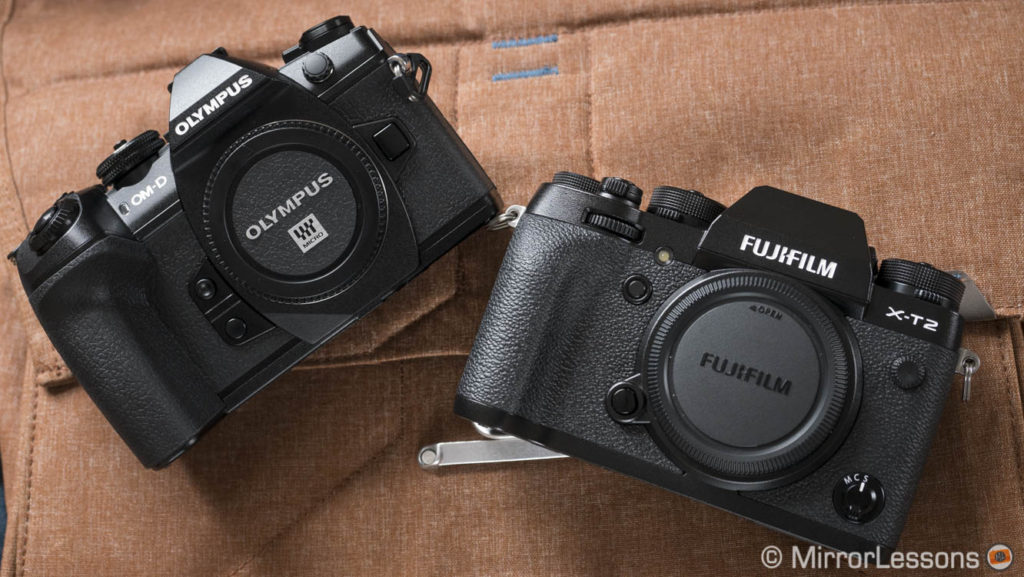
Since both the E-M1 II and X-T2 share many characteristics including a weatherproof design, advanced hybrid autofocus system, 4K UHD at 30fps, dual SD card slots, built-in WiFi, advanced colour profiles and a great range of lenses, it is easy to understand why potential users are so torn between the two options.
In this comparison preview, our hope is to clarify where the main differences lie and how they might affect your final decision.
Ethics statement: The information supplied in this article is based on official specifications, press releases and our personal experience with Olympus and Fujifilm cameras. If we get the chance to test the two cameras side-by-side, we will publish a full comparison. We were not asked to write anything about these cameras, nor were we provided any compensation of any kind. Within the article, there are affiliate links. If you decided to buy something after clicking the link, we will receive a small commission. To know more about our ethics, you can visit our full disclosure page. Thank you!
1. Sensor size and resolution
One of the most obvious differences regards the sensor size and resolution.
The E-M1 II uses a new 20MP Micro Four Thirds sensor that, when combined with the new TruePic VIII processor, allows for an extra stop of dynamic range and low-light performance compared to previous model. The sensor was designed especially for the new flagship model.
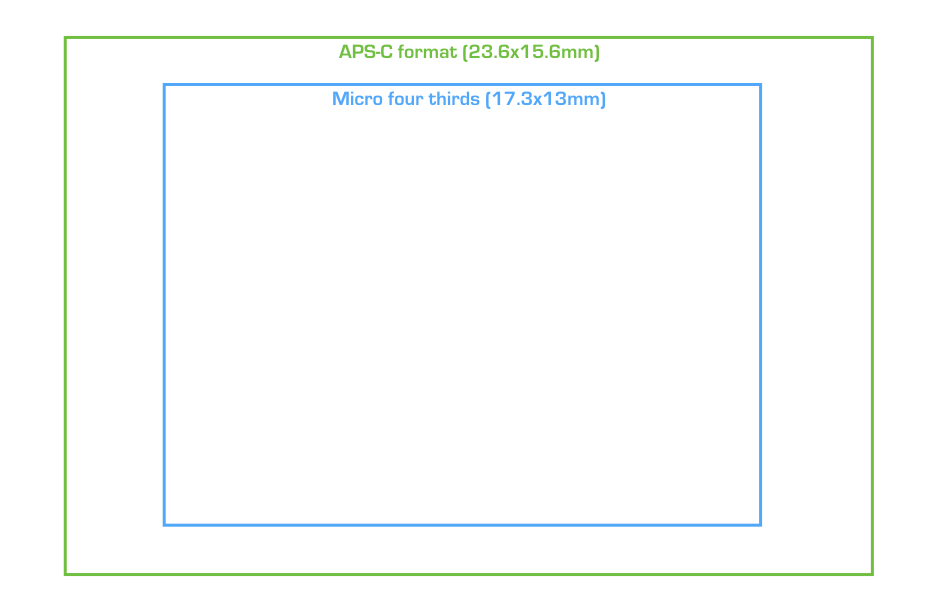
The X-T2, with its 24MP APS-C X-Trans III CMOS sensor, upstages the Olympus in terms of both sensor size and resolution. It is the same sensor used inside the X-Pro2 which was released earlier on this year. In conjunction with the new X Processor Pro, the X-T2 is capable of delivering excellent dynamic range and low-light performance.
The X-T2 can record 14-bit RAW files with lossless and uncompressed options. The E-M1 II only records RAW in 12 bit.
2. Image stabilisation
Perhaps the defining difference between the E-M1 II and the X-T2, and the two systems in general, is the way in which they incorporate image stabilisation.
Olympus has been using sensor-shift image stabilisation on its cameras for years now, and the latest iteration of its so-called Advanced 5-Axis In-Body Stabilisation is nothing short of impressive.
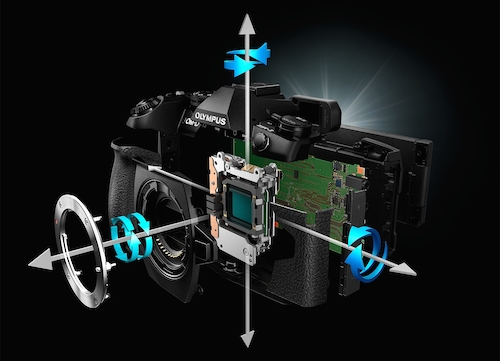
The E-M1 II is capable of compensating up to the equivalent of 5.5 steps on its own and 6.5 steps at 100mm when combined with a lens that uses Olympus Sync IS system such as the 12-100mm f/4.0 IS PRO for both stills and movies. In our E-M1 vs E-M1 II complete comparison, you can see many examples of the improvements made by Olympus.
Below you can see an example video taken hand-held with the OM-D E-M1 II and various lenses.
On a humorous note, Setsuya Kataoka stated in his interview with Amateur Photographer that “6.5 stops is actually a theoretical limitation at the moment due to rotation of the earth interfering with gyro sensors.”
The X-T2, like all other cameras in the X series, lacks sensor-shift stabilisation. Instead, it relies on the optical stabilisation of its lenses, which of course varies depending on the lens being used. Some lenses are very effective like the XF 18-135mm f/3.5-5.6 and the XF 100-400mm but it isn’t quite as good as sensor and OIS combined. Another advantage of in-body stabilisation is compatibility with all lenses (including primes that lack OIS) and third party/adapted lenses.
3. Characteristics of autofocus system
Although the core characteristics of the E-M1 II and X-T2’s respective autofocus systems are similar in that they both rely on a hybrid use of contrast and phase detection points, the way in which they work and their various features differ.
The E-M1 II uses Dual Fast AF, a new system that incorporates 121 cross-type AF points that facilitate detection of vertical and horizontal lines. You can select four AF target modes: All Point, Single Point, 9-Point Group, and 5-Point Cross. The camera has a new Subject Tracking algorithm that can detect the subject automatically and select the appropriate AF points in C-AF Tracking mode.
Specific settings to improve the AF performance include an in-camera AF Limiter, AF Scanner (controls the back and forth movements of the lens elements), AF during magnification, and a brand new Pro Capture mode that takes 14 RAW frames before the shutter release is fully pressed.
The X-T2 also has a very advanced autofocus system called Intelligent Hybrid AF. It utilises 91 points, 49 of which are phase detection that cover 40% of the sensor and can be subdivided into 325 points with certain settings. It comes with three AF target modes: Single, Zone, Wide/Tracking that can be combined with either AF-S or AF-C.
Also new is the AF-C Custom Settings menu with the following options: basic, ignoring obstacles, accelerating/decelerating subjects, for subjects that suddenly come into the frame, erratically moving subjects, and custom. There is also an updated AF algorithm that lets you control tracking sensitivity on the subject, speed tracking sensitivity on a moving subject and zone area switching.
Finally, the X-T2 comes with a handy focus lever (or joystick) that lets you change the AF point on the fly. On the E-M1 II, you can use the four-way arrow pad on the rear.
Both cameras come with Face and Eye Detection.
4. Mechanical and electronic shutter speeds
Between the E-M1 II and the X-T2, the former has more impressive specifications in terms of the continuous shooting speed.
With the electronic shutter, the E-M1 II is capable of up to 18fps in C-AF and 60fps in S-AF while with the mechanical shutter, it still delivers a very decent 10fps in C-AF and 15fps in S-AF. Rolling shutter artefacts with the electronic shutter have been reduced and should be present with extremely fast-moving subjects only.
The X-T2 is capable of up to 8fps in S-AF and C-AF with the mechanical shutter or 11fps if you attach the optional VPB-XT2 battery grip. This goes up to 14fps with the electronic shutter, though you may not want to use it for action as rolling shutter is more present.
Also bear in mind that while 60fps in S-AF is an impressive specification on paper, you’ll likely end up using C-AF far more than S-AF for action photography.
Both cameras shoot up to 1/8000s with the mechanical shutter and 1/32000 of a second with the electronic shutter.
5. Rear monitor
The rear monitors of both cameras are very versatile but they work in different ways.
The E-M1 II has a traditional vari-angle monitor than you find on many cameras with advanced video capabilities. It swings out to the left and is fully articulating. Since it features touch sensitivity, you can easily change your AF point, take a picture or swipe through your images without touching a single physical button. You also have an AF Targeting Pad mode where you can use the touch screen to change the AF point while composing through the EVF.
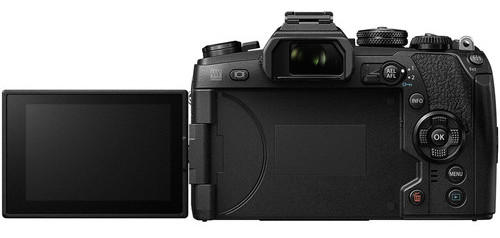
The X-T2 features an innovative 3-way tilting monitor that tilts up 90 degrees, down 45 degrees and 45 degrees to the side. With these three options, you will rarely lose sight of your composition even when the camera is very low to the ground, high above your head or in a vertical orientation. The only drawback is that it isn’t touch sensitive.
Both screens are 3-inch types, though that of the X-T2 has more resolution at 1.62M dots versus the 1037K dots of the E-M1 II’s screen.
6. Electronic viewfinder
While the viewfinders of both models are excellent, the X-T2’s has a larger magnification of 0.77x versus the 0.74x magnification of the E-M1 II’s. It has widely been called one of the best electronic viewfinders on the market.
The OLED panel of the X-T2 and LCD panel of the E-M1 II both feature 2.36M dots of resolution. The E-M1 II’s EVF frame rate can go up to 120fps without any drop in resolution. The X-T2’s EVF refresh rate is 60fps and doesn’t decrease in low light. With the Boost mode, it can go up to 100fps.
7. Physical dials / buttons and menu system
This is a smaller difference but a relevant one if you have an affinity for analog controls.
The dials of the X-T2 are more traditional compared to those of the E-M1 II. They include a dedicated ISO dial, exposure compensation dial, and shutter speed dial, not to mention the clicking aperture rings on all Fujifilm X Series lenses. In short, you rarely need to enter the menu to change the basic exposure settings of the camera. It also comes with a few extras such as a Drive dial, Metering dial, two control dials on the front and rear, and a Q (quick menu) button.
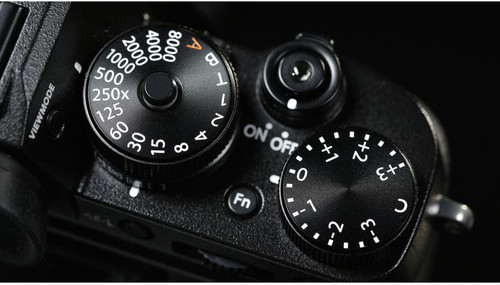
This isn’t to say that the E-M1 II lacks external dials but they are certainly more modern. For example, it comes with the ubiquitous PSAM mode dial, as well as a raised button on top with AF, drive, metering, timer and HDR options.
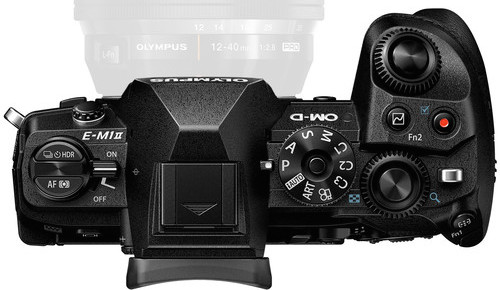
Both have a redesigned menu system compared to their predecessors but the Fujifilm one appears more organised and much easier to navigate.
8. Profiles for video
A big step up for both brands was the addition of 4K video to their flagship models, with both the E-M1 II and X-T2 being capable of shooting in 4K UHD at 30/25/24fps at a data rate of around 100Mbps.
There are, however, a couple of differences if we look below the surface.
The E-M1 II comes with a Cinema 4K option (24p) with a data rate of up to 237Mbps. There is no crop in ether UHD or Cinema 4K mode. The X-T2 crops the sensor in 4K by approximately 1.17x.
The Fujifilm camera has its own F-Log gamma profile to maximise dynamic range, and it can be graded in post-production. (Bear in mind that it is only available via the HDMI output, meaning you’ll need an external recorder to take advantage of F-Log gamma.) What’s more, all of Fujifilm’s beloved Film Simulation Modes can be applied to video.
In Full HD both cameras can shoot up to 60fps. At 25/30fps, the E-M1 II has a maximum bitrate of 202Mbps. Both cameras offer continuous AF during video recording.
9. Headphone jack
You often hear videographers complaining about the lack of a built-in headphone jack on mirrorless cameras.
Thankfully, the E-M1 II comes with a 3.5mm headphone jack built directly into the body.
In the case of the X-T2, you won’t find a headphone jack on the body but there is one on the optional vertical battery grip. It too is a 3.5mm type.
Both cameras come with a 3.5mm microphone input jack, a 2.5mm remote control input and HDMI micro connector.
10. Extra functionalities
The final difference concerns the extra functionalities of each camera, and between the two models, I think it is fair to say that the Olympus has a little more to offer.
On the new E-M1 II, there are a number of functionalities inherited from previous models including:
- Focus Bracketing: Take 3 to 999 shots at focus steps adjustable from 1 to 10. Good for macro.
- In-Camera Focus Stacking: 8 shots are taken at different focus points and automatically composited together into a single image. Good for quick macro on the go.
- Live Bulb / Live Time: Lets you watch your long exposure being built right before your eyes.
- Live Composite: Takes several long exposures, only adding new light sources to the final picture. Good for star trails and fireworks.
- High Res Shot: The sensor moves in 0.5 pixel increments while capturing 8 shots to generate a single high-resolution 50MP JPG / 80MP RAW file.
- HDR Auto Composite: Automatically combine differing exposures in-camera to have more dynamic range.
As for the X-T2, the features it has that the E-M1 II does not are:
- In-Camera Panorama: Pan from side-to-side or up and down to create a panorama (JPG only).
- Digital Split Image: A manual focus assist. Splits the central area of the camera’s live view into four stripes. When they are aligned, the image is in focus.
Happily, both cameras come with Multiple Exposure, Interval Shooting and Time-lapse movie option, MF Assists (magnification, focus peaking), various bracketing modes and WiFi capabilities.
Conclusion
Between the Olympus OM-D E-M1 II and the Fujifilm X-T2, we’re faced with a very difficult choice because they have so much in common, from their respective hybrid autofocus systems to their video capabilities.
For those who do a lot of hand-held photography or video work, enjoy adapting third-party lenses or often work in poor light conditions, the Olympus may be the better solution because you have access to 5-axis in-body stabilisation no matter which lens you use.
If, on the other hand, you prefer straightforward analog controls or require the extra resolution and shallow depth of field afforded by the Fujifilm sensor, you may find the X-T2 a more tempting proposition.
How about you? Which of these two cameras would you choose and why? Share your thoughts below!
Check price of the Olympus OM-D E-M1 II on
Amazon | Amazon UK | eBay | B&H Photo
Check the price of the Fujifilm X-T2 on
Amazon | Amazon UK | B&H Photo | eBay

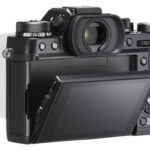
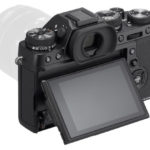
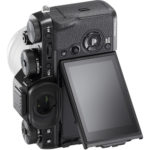
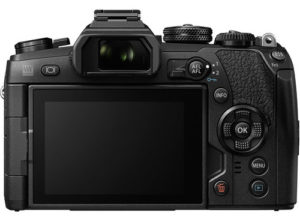
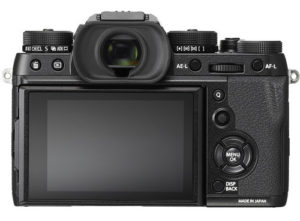
E-M1 II for me. The X-T2 is an awesome camera, but I really like the IBIS that Olympus offers, and I prefer the control setup on the E-M1. Although, I do have to admit I fell in love with that little AF Point Joystick on the new Fuji. 🙂
What is not mentioned is the size of the lenses, the APS lenses are on the large size but the ones for micro4/3 are very small so if like me moving down from a full frame out fit I now have the same range of lenses all in the same bag at a third of the weight
Robin
Another thing to be excited about with the E-M1 II is the introduction of a software focus limiter that works with any M4/3 or 4/3 lens. This seems like a hugely valuable way to reduce hunting when you know that you will be working in a limited focus range (which is almost always). I could see this having a huge benefit for action shooting using C-AF.
E-M1 II would be my choice. I have the E-M5 II and E-M10 so I have a number of compatible lenses and am used to Olympus cameras. Although I did not see mention of the sizes and weights, I would assume that the Fuji and it’s lenses would be heavier and larger, a negative as I see it. I really like the idea of the focus stacking, focus limiter and phase detection. All would be new and very useful to me. I am also completely sold on Olympus in-body stabilization.